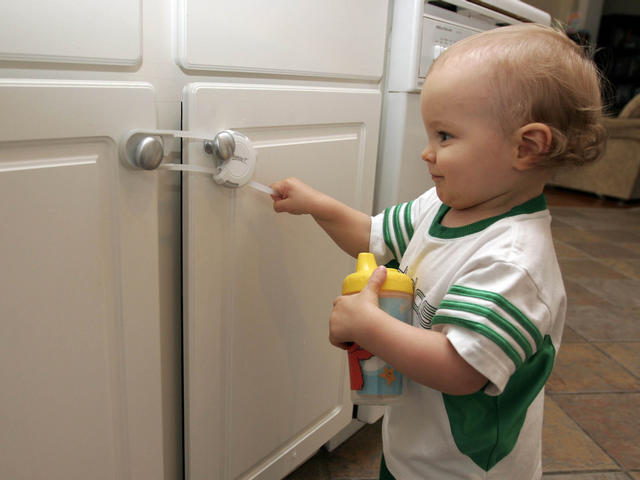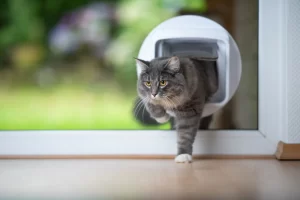Parents should first make sure their children are safe at home. Childproofing your home is an important part of making it a safe place for your children to learn and play. From electrical outlets to sharp corners, there are potential hazards everywhere in your home. This complete guide covers the many aspects of childproofing so you can make your home a safe place for your children.
1. Look for Potential Hazards
The first thing you need to do to make your home safe for children is to notice potential hazards. Look through each room through your child’s eyes and pay special attention to the places he or she likes to explore. Electrical outlets, sharp corners, dangling cords, and small objects that can cause choking are all common hazards. Make a list for each room to make sure you get everything.
2. Electrical Outlets and Cords
Electrical outlets are a big problem because they are easily accessible by little fingers. To prevent your children from plugging things into the socket, you can use socket covers or plug protectors. Also, ensure that any loose wires on electronic devices and appliances are properly secured to avoid tripping hazards and possible injury.
3. Sharp Edges and Furniture
Children often trip and fall, so it’s important to keep sharp-edged furniture out of their reach. In the event of a collision, you may need to use corner or edge protectors to limit damage. Bookcases, dressers, and other heavy furniture should be secured to the wall to prevent them from falling over.
4. Stair Safety
As a safety measure, install safety gates at the top and bottom of every staircase in your home. Make sure the gate is installed correctly and meets safety standards. As your children get older, teach them how to use the stairs safely by emphasizing the importance of holding on to the handrail.
5. Keep Your Kitchen Safe
There are many things in the kitchen that can be dangerous, such as sharp objects and hot surfaces. Cover the stove knob so that curious children cannot turn on the burner. Lock cabinets where cleaning products, sharp tools, or small utensils are stored for safekeeping. Keep hot food and drinks out of reach and use placemats or tablecloths to prevent spills.
6. Keep Your Bathroom Safe
Bathrooms can be dangerous for children because the floors are often wet and children can easily come into contact with medications. Don’t let people slip. Place non-slip mats on the bath and floor. Lock cabinets where medications, toiletries, and cleaning products are kept. Young children may be attracted to water, so use a toilet lock to prevent them from drowning.
7. Window Security
Windows are a major reason why people fall. Install window bars or safety nets to prevent people from accidentally falling out of windows. Place furniture away from windows to prevent people from climbing on it. Make sure blind cords are locked and out of reach as they could cause someone to choke.
8. Choking Hazard
Small objects such as toys, coins, and certain foods can cause choking in young children. Check toys regularly for small pieces or loose parts and keep small objects out of reach. To prevent your child from choking, cut the food into bite-sized pieces and watch them while they eat.
9. Keep Heavy Objects Safe
Children are naturally interested, so they may try to climb on shelves or furniture. Secure heavy items such as TVs and bookcases to the wall so they don’t fall over. Do not place heavy objects on high surfaces where children may want to reach them.
10. Baby-Proofing the Nursery
Make sure that the crib meets safety standards and that the slatted frames are the correct distance apart so that the baby does not get stuck. For safety reasons, use a firm mattress and avoid soft bedding such as duvets and pillows. To eliminate the risk of strangulation, install blinds without cords.
Conclusion
Securing your child’s home is an ongoing process that requires your time and attention to detail. As your child grows older and becomes more mobile, check your child’s environment regularly. To ensure that your child has a safe place to play and grow, you need to identify and address potential hazards. To ensure your child is safe at every stage of development, stay up to date on the latest safety tips and products.
FAQs
1. Why is it important to keep children away from home?
Child safety is important to ensure that children have a safe place to play and learn. It helps prevent people from getting injured or having accidents in their own homes.
2. How do you recognize possible dangers in your home?
Carefully inspect each room at your child’s eye level for common hazards, such as electrical outlets, sharp corners, dangling cords, and small objects that could cause choking. Make a checklist for each room to make sure everything is in order.
3. What can I do to prevent my child from using plugs and cords?
Use outlet covers or plug protectors to prevent children from gaining access to electrical outlets. Secure loose cords from electronic devices and appliances to prevent tripping hazards.
4. How do you prevent children from playing on furniture with sharp edges?
Use corner or edge protectors to reduce damage from impact. Also secure heavy furniture, such as dressers and bookcases, to the wall so that they do not fall over.
5. Why is it important to make stairs safe when childproofing?
To prevent people from falling, stairs must be safe. Ensure that safety gates at the top and bottom of stairs meet safety standards. Teach your children to use stairs safely from an early age.
6. How do I keep my child safe in the kitchen?
Cover the stove knobs, store cleaning products and sharp objects in locked cupboards, and keep hot foods and liquids out of reach. Placemats or tablecloths can help prevent food spills.



